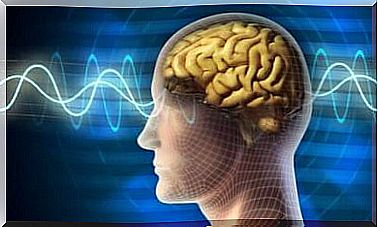Animal Assisted Therapy In People With Alzheimer’s

Animal-assisted therapy is one of the non-pharmacological treatments that provides the most benefits for people with Alzheimer’s disease, according to some studies. Thanks to its effectiveness, it is used in parallel with other cognitive stimulation activities that are developed on a daily basis in institutions. This is for example the case of music therapy, risotherapy or physical exercise.
We must also take into account the fact that controlled contact between a person with Alzheimer’s and an animal is beneficial in several ways. Cognitive, social, emotional and autonomous. In fact, emotional memory is the last thing that goes missing in someone with Alzheimer’s disease. Creating a positive emotional bond for both is therefore possible. Let’s explore this idea further.
Effectiveness of animal-assisted therapy to treat Alzheimer’s
Many studies support the benefits of animal-assisted therapy in elderly people with Alzheimer’s. Or some other type of dementia. The main goal of these non-pharmacological treatments is to improve the quality of life of these people. This can be achieved by working four basic areas. Physical, cognitive, emotional and social.

The use of this type of therapy is one of the options most requested by public or private institutions. Why ? Because it provides immediate benefits to patients. This is especially true during the early stages of this type of dementia.
The therapy is most often carried out with dogs. Although it is also possible with cats and horses. In principle, any breed of dog is valid for this therapeutic work. The only condition is that the animal has been properly trained. Usually, you work with dogs like the Golden Retriever, Yorkie and German Shepherd.
The selection of animals must be very strict. They must meet several criteria. Reliability, predictability, control and adaptability. In addition, they must inspire confidence in the entire therapeutic team.
Benefits of animal-assisted therapy in people with Alzheimer’s
1. Skill improvement
Animals help Alzheimer’s patients improve things like motor skills and balance. Activities such as walking the dog, brushing it, feeding it or interacting with it facilitate motor and sensory skills. Thus, therapists can use these animals to help patients be more independent.
In addition, an animal reacts to communicative stimuli, arouses interest, fixes attention and promotes concentration.
2. Better quality of life
The relationship with animals allows patients to have a better quality of life. It also helps them improve their attention and communication skills.
The animals used in these therapies have been trained in a specific way. In order to be able to interact with the elderly. Their presence and their company provide more well-being and happiness. They also bring more serenity to patients. And help them to feel useful thanks to the different tasks they ask.
3. Memory strengthening
Thanks to this type of therapy, people suffering from Alzheimer’s do not forget to carry out basic activities of daily living such as getting dressed or doing their hair. This is because they are responsible for the life of another living being. The majority of these people are primarily concerned with not forgetting to take care of animals.

4. Improved mood
This type of therapy is also used to reduce agitation and aggression in people with dementia. An animal is a powerful source of motivation in the hands of a professional. In this way, it generates positive emotions, facilitates and improves personal relationships and communication within a group.
In addition, the attentions required by an animal can promote physical, cognitive and social activity, in addition to strengthening self-esteem and improving general well-being.
Conclusion
The results obtained with animal-assisted therapy are new and interesting for researchers. An animal can change the life of a person with dementia. He can offer her motivation to keep busy. Promote physical activity. And support his emotional balance.
There is currently no cure for dementia. Therapies therefore seek to reduce the impact of the disease on patients. Their purpose is to slow the progression of cognitive deterioration. And delay the onset of complications. Animal assisted therapy can be used to control behavioral disturbances. And to address the concrete health problems that may arise.










